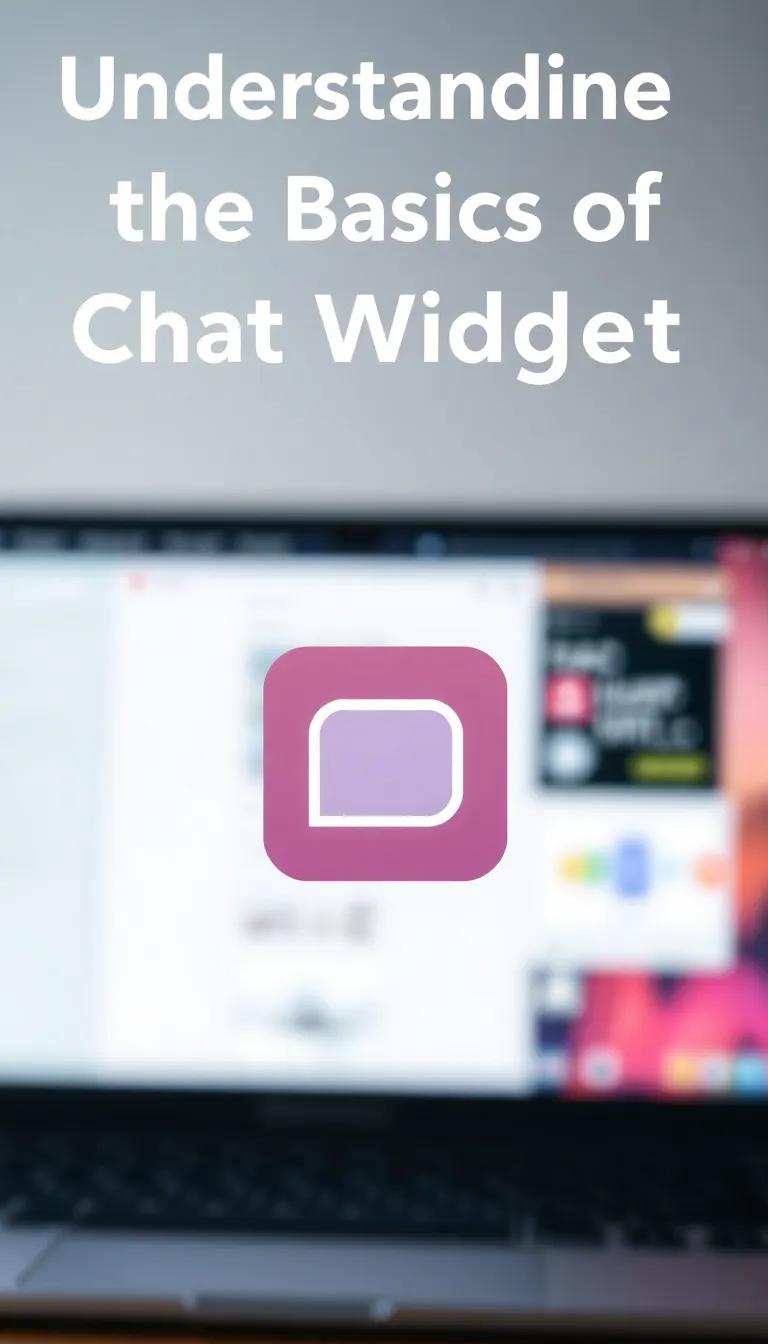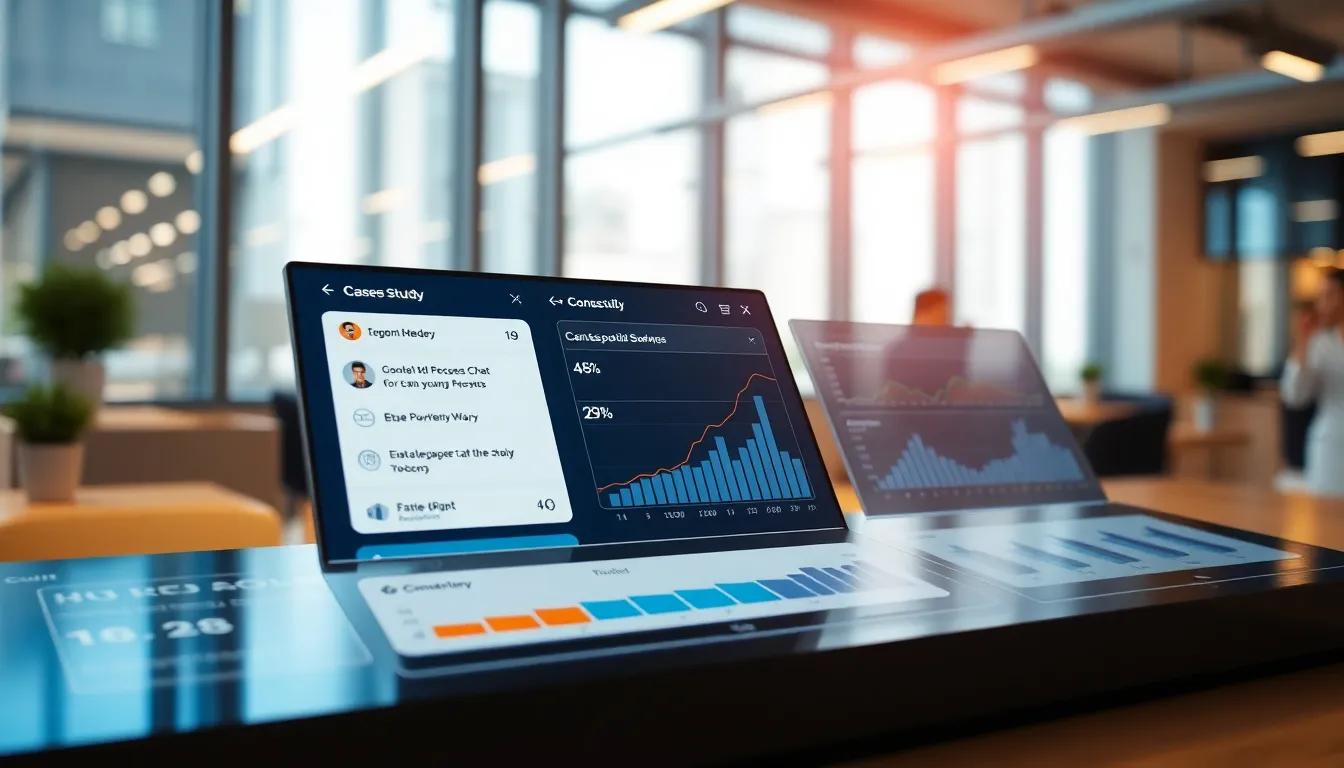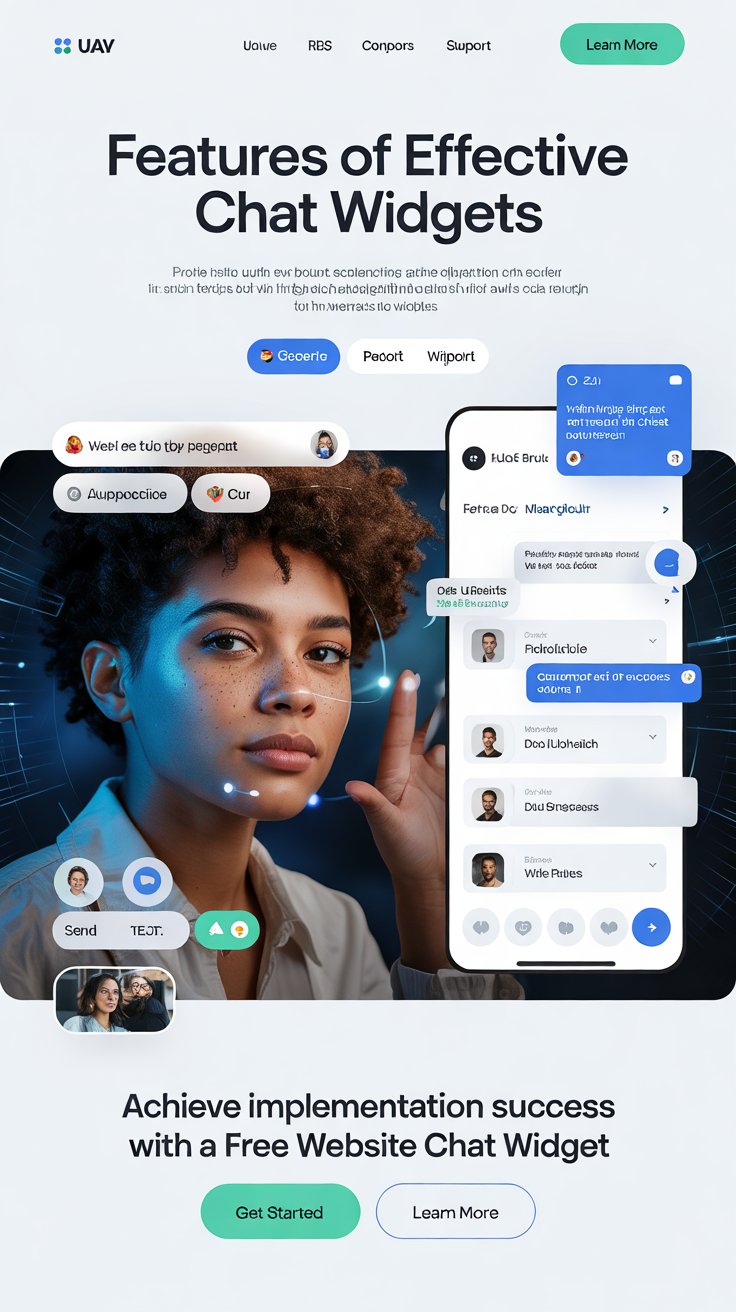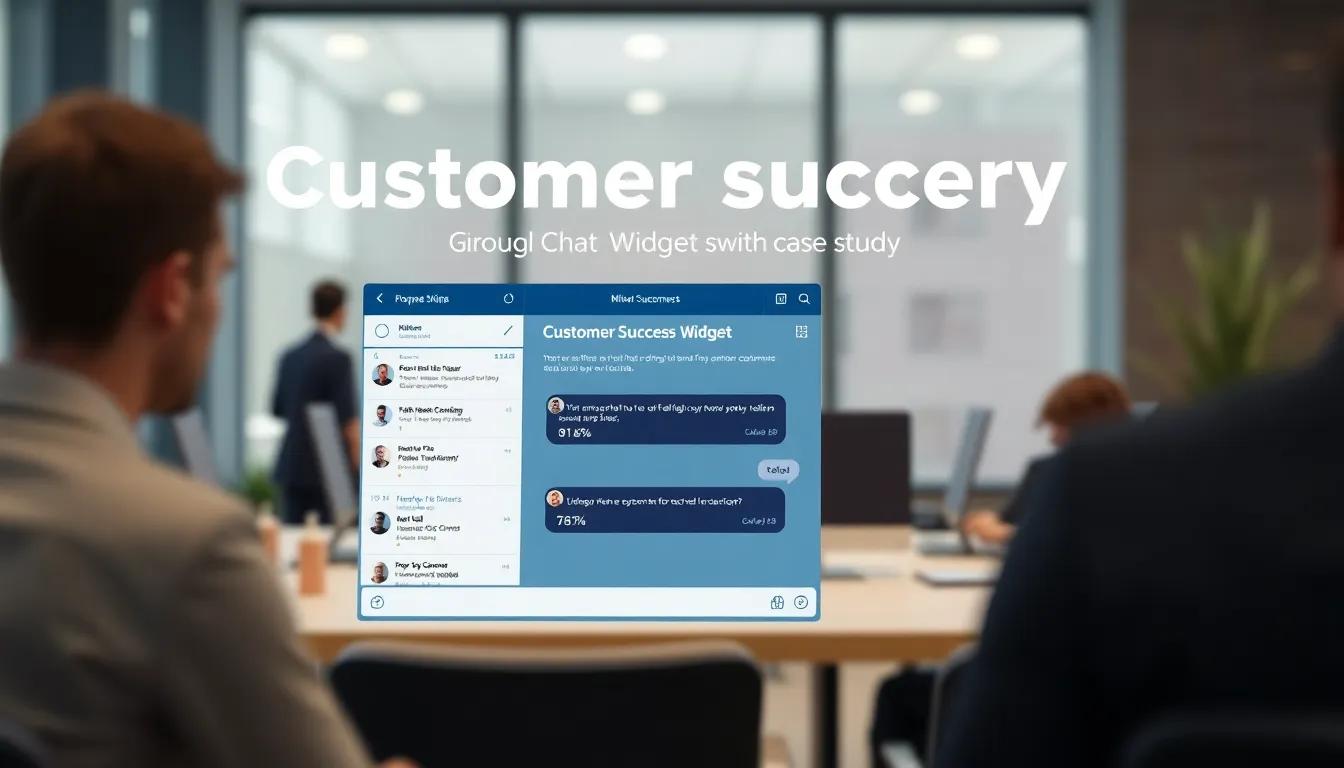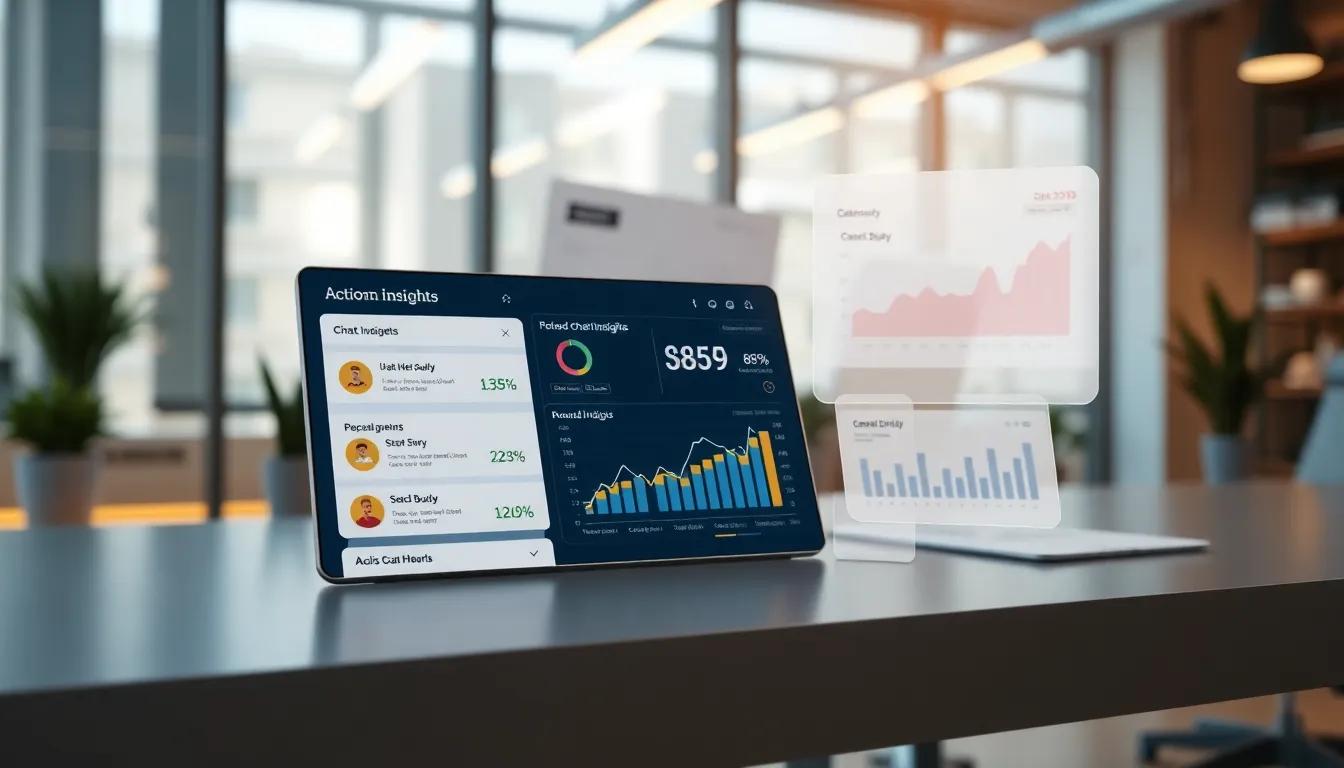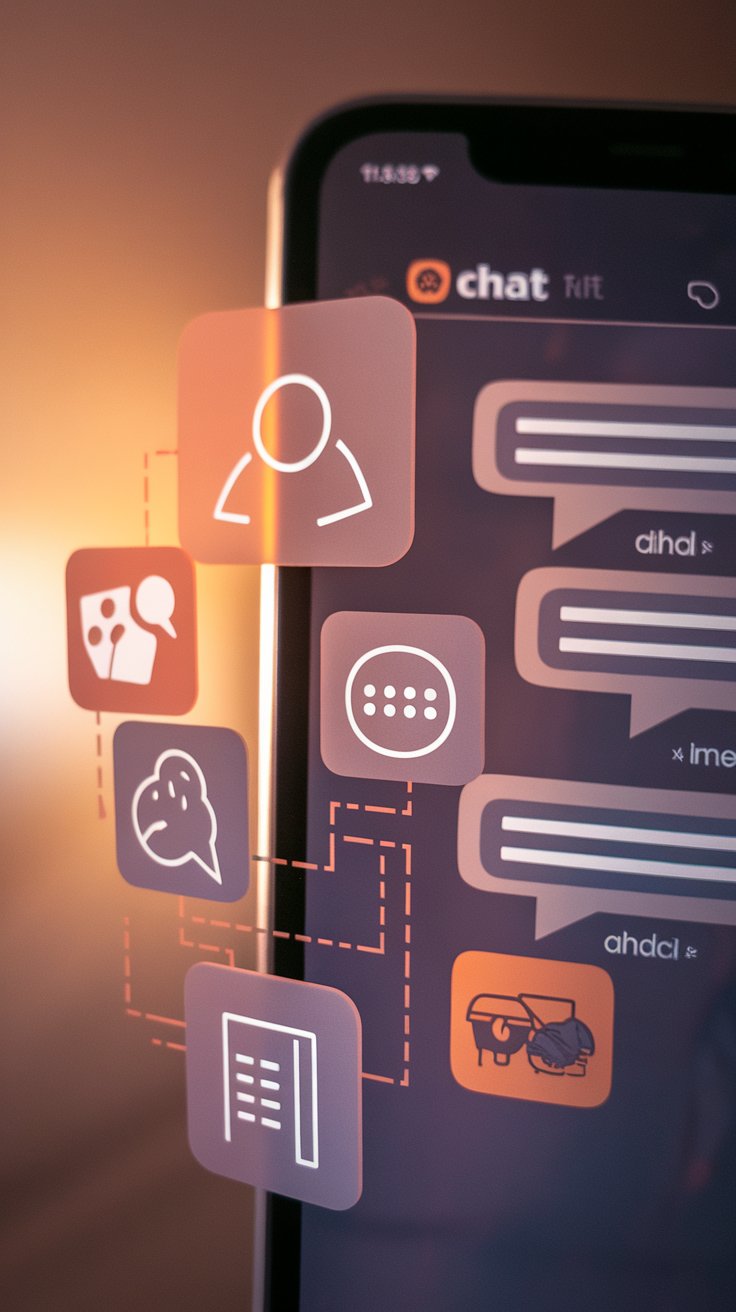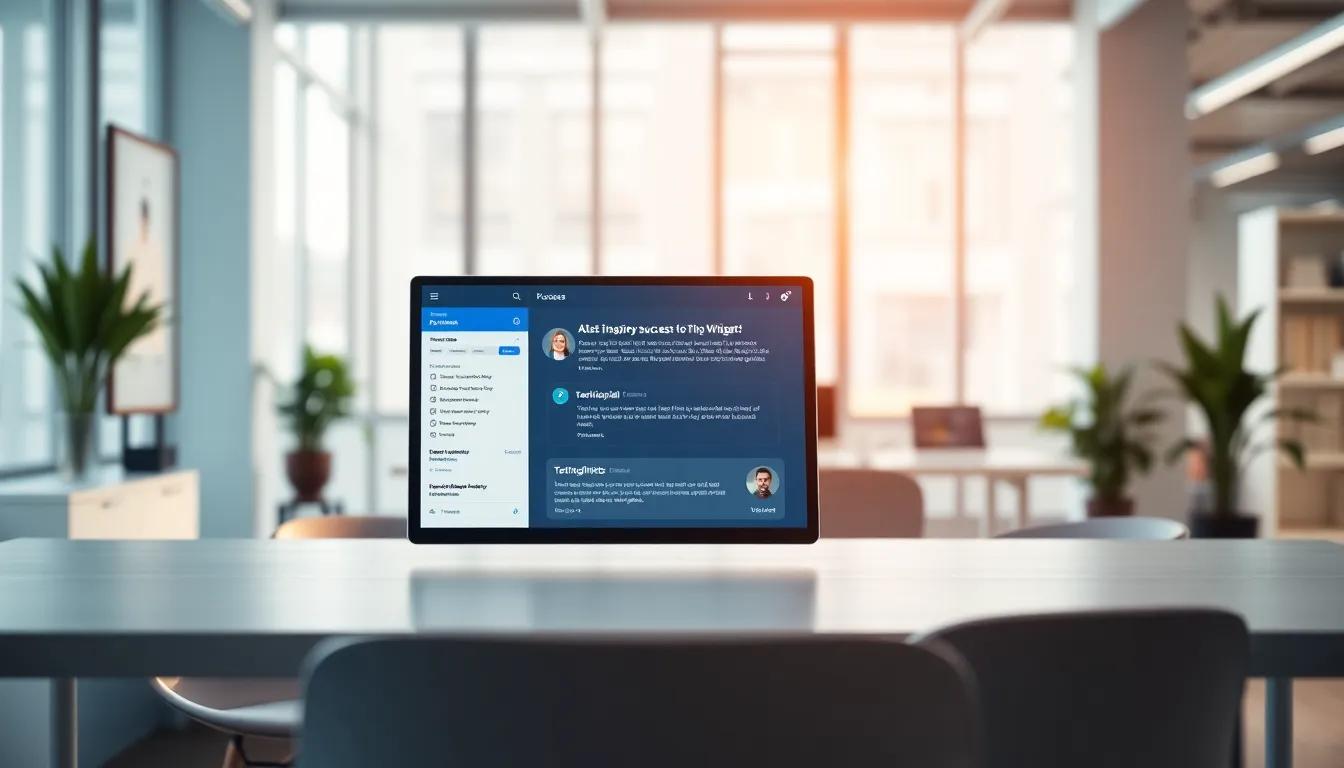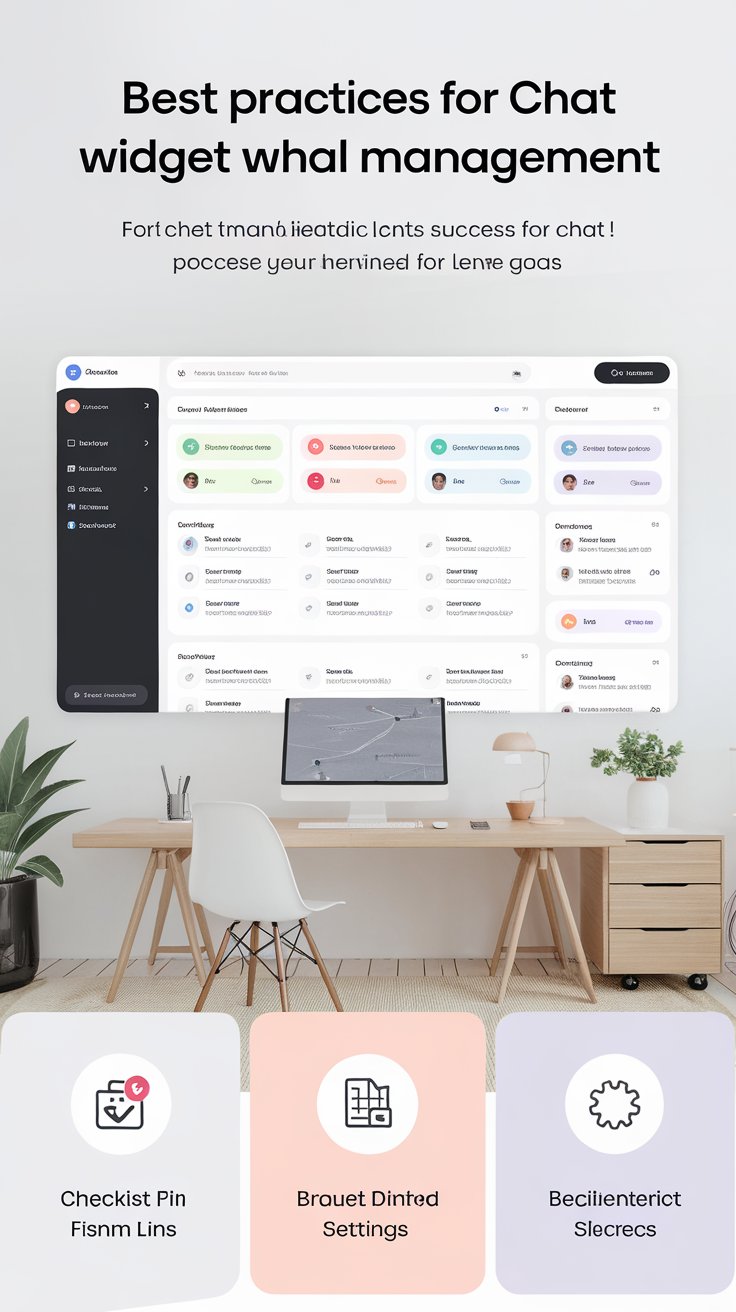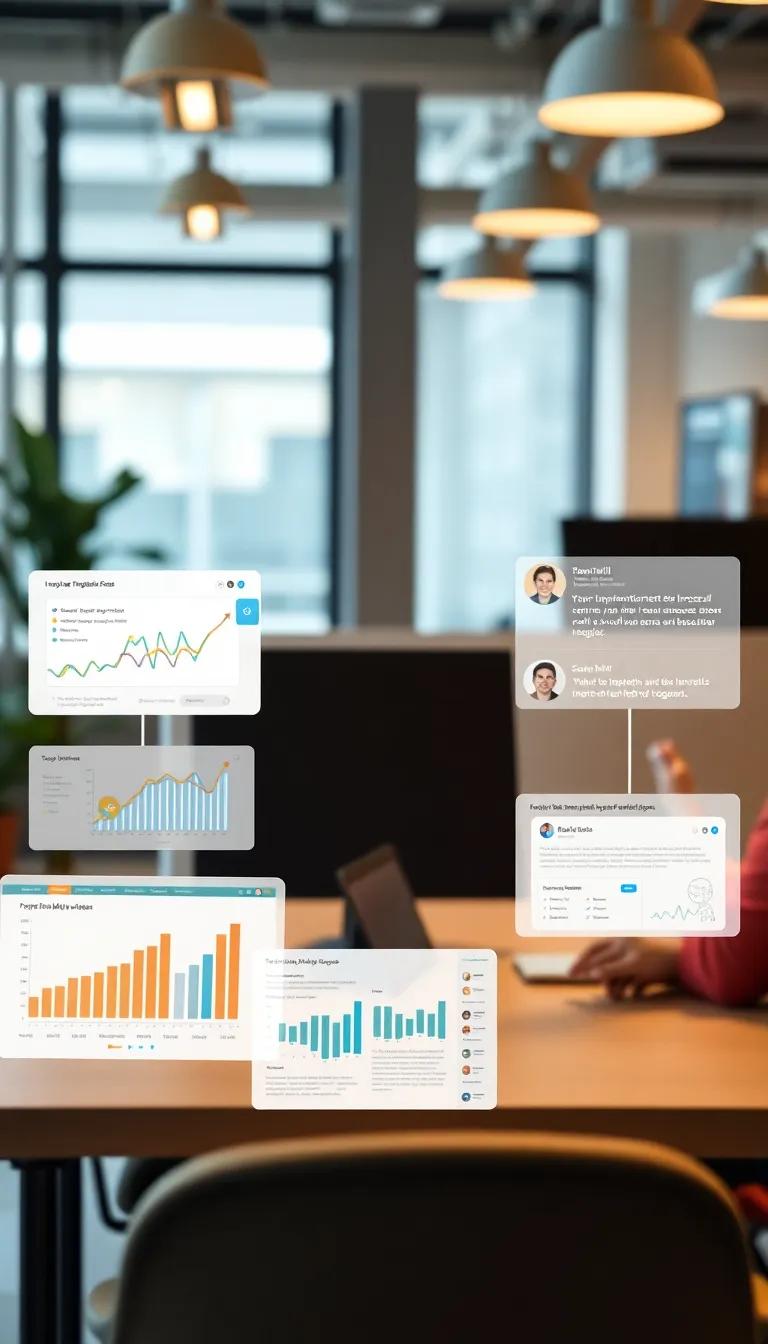Introduction
A free website chat widget serves as a powerful tool that can enhance customer interaction, streamline support, and ultimately drive conversions. As companies increasingly recognize the importance of immediate response times and tailored customer experiences, integrating a chat widget into their online platforms becomes essential for capturing and retaining customer attention.
From improving service delivery to enhancing user experience, the multifaceted benefits of chat solutions will be examined. Furthermore, we will discuss the strategic role these tools play in engaging customers and ensuring seamless communication, helping your business thrive in a competitive landscape.
Understanding the Basics of Chat Widgets
Introduction to Chat Widgets
Chat widgets are powerful tools integrated into websites, enabling real-time communication between businesses and their customers. These user-friendly interfaces allow visitors to engage with support teams, receive quick answers to queries, and foster a deeper connection with brands. Understanding the fundamental concepts of chat widgets is essential for achieving implementation success and enhancing customer engagement.
Definitions and Types of Chat Widgets
At their core, chat widgets are embedded scripts that display a chat interface on web pages. They can vary in complexity, but generally, they include a chat window, text input for users, and often buttons for quick responses. The different types of chat widgets include:
- Live Chat Widgets: These allow direct contact with customer support agents in real time.
- Chatbots: Automated systems that use predefined responses or artificial intelligence to address common inquiries.
- Hybrid Solutions: A combination of live chat and chatbot capabilities, providing a seamless transition between automation and human interaction.
Significance in Enhancing Customer Interaction
The significance of chat widgets lies in their ability to facilitate instant communication. In today’s fast-paced environment, customers expect immediate responses and resolutions. Chat widgets play a crucial role in meeting these expectations by:
- Improving Accessibility: They ensure that help is available 24/7, allowing customers to reach out whenever convenient.
- Enhancing User Experience: An intuitive chat interface guides users through their journey, simplifying navigation and information retrieval.
- Collecting Valuable Data: The interactions that occur within chat widgets can yield insights into customer preferences and behaviors, informing marketing strategies.
By utilizing chat widgets effectively, businesses can cultivate relationships with their users, ultimately translating into improved customer satisfaction and loyalty. The fundamental concepts of these tools illustrate not only how they operate but also their ability to transform customer engagement. Embracing chat widgets is a step towards achieving implementation success and ensuring a responsive, customer-focused approach in any digital strategy.
Features of Effective Chat Widgets Achieve Implementation Success with a Free Website Chat Widget
Key Features for Optimal Customer Service
The effectiveness of a chat widget in enhancing customer service is largely influenced by its features. Businesses seeking to achieve implementation success should focus on specific functionalities that can significantly improve engagement and customer satisfaction. The most notable aspects include customization, automation, and multi-channel integration, each contributing to a seamless user experience.
Customization stands out as a pivotal feature of chat widgets. A flexible and tailored chat interface allows businesses to align the chat widget with their brand identity. Custom colors, logos, and welcome messages enable companies to create a cohesive visual experience. Additionally, personalized interactions can be implemented, where the widget greets returning visitors by name or recommends products based on previous browsing history. This personal touch not only enhances brand perception but also improves customer loyalty, creating a positive feedback loop.
Automation is another key feature that significantly enhances the efficiency of chat widgets. Automated responses, often powered by artificial intelligence, can handle common queries and provide instant assistance without human intervention. Frequently asked questions can be programmed, allowing the widget to respond immediately to customer inquiries. Such automation helps reduce wait times, ensuring that customers feel their needs are prioritized. Moreover, advanced chat widgets often support intelligent routing, directing complex questions to the appropriate support team members, ensuring that issues are resolved promptly and effectively.
Multi-channel integration further solidifies the effectiveness of chat widgets. Customers today interact with brands across various platforms, including social media, email, and SMS. A chat widget that can seamlessly integrate with these channels ensures consistent communication. For instance, messages originating from a social media platform can be managed through the same chat interface as those from a company website. This omnichannel approach not only streamlines communication but also enables businesses to track customer interactions holistically, thus enhancing their understanding of customer preferences and behavior.
In order to achieve implementation success with a free website chat widget, businesses should prioritize features such as customization, automation, and multi-channel integration. These elements not only improve customer service but also drive meaningful interactions that translate into tangible results. By focusing on these attributes, companies can significantly elevate their customer engagement efforts, paving the way for enhanced satisfaction and loyalty.
Implementing a Chat Widget on Your Website Achieving Implementation Success
Step-by-Step Guide to Effective Chat Widget Implementation
Integrating a chat widget on your website can significantly enhance customer engagement. Follow these steps for effective implementation.
1. Define Your Objectives
Identify what you want to achieve with the chat widget. Is it to improve customer service, boost sales, or enhance user experience? Clarifying your goals ensures that your chat widget aligns with your business strategy.
2. Choose the Right Chat Widget
Research and select a free chat widget that best fits your needs. Consider features such as customization, automation capabilities, and integration with existing systems. Ensure that the widget is user-friendly and scalable.
3. Install the Widget
Once you’ve selected a widget, access your website’s backend. Typically, this involves:
- Copying the installation code provided by the widget service.
- Accessing the HTML of your website.
- Pasting the code in the footer before the closing tag.
For platforms like WordPress, there may be plugins available for seamless integration.
4. Customize the Appearance
Modify the chat widget’s design to align with your website’s branding. Adjust colors, icons, and text to ensure that the widget feels like a natural part of your site. Testing different designs can help determine what resonates best with your audience.
5. Set Up Automated Responses
Develop a series of automated responses for frequently asked questions. This will help manage initial customer inquiries efficiently. Ensure that the tone of the responses aligns with your brand voice.
6. Train Your Team
Ensure that your customer service agents are well-trained in using the chat widget. They should be familiar with its features and how to interpret chat data for improved customer interaction.
7. Monitor Performance
Once the chat widget is live, monitor its performance regularly. Utilize analytics tools to track engagement metrics such as response time and customer satisfaction scores. Make adjustments based on the data to optimize effectiveness.
Following these steps will not only facilitate a smooth implementation process but will also set the stage for achieving positive results with your chat solutions, ultimately enhancing customer engagement and overall satisfaction.
Measuring the Impact of Your Chat Widget
Implementing a chat widget on your website is just the first step toward enhancing customer engagement. To truly understand its effectiveness, businesses must actively measure its impact on user engagement and conversion rates. This not only informs strategies for improvement but also helps in justifying the investment made in chat solutions.
Key Performance Indicators to Track
Begin by identifying the key performance indicators (KPIs) that will provide valuable insights into how well your chat widget is performing. The following KPIs are essential for a comprehensive evaluation:
- Engagement Rate: Track the percentage of website visitors who interact with the chat widget. This metric gives an indication of how compelling and accessible the chat feature is to users.
- Response Time: Measure the average time taken for the chatbot or live agent to respond to user inquiries. Quicker response times often correlate with higher user satisfaction.
- Chat Conversion Rate: Analyze how many chat interactions lead to desired actions, such as sign-ups, purchases, or lead captures. This is a critical metric to assess the effectiveness of the chat widget in converting interactions into tangible results.
- Customer Satisfaction Score (CSAT): After a chat session, ask for user feedback through a simple survey. This score indicates how satisfied customers are with their experience.
- Session Duration: Monitor the average length of chat interactions. Longer sessions may imply that users are engaged and receiving value, whereas shorter sessions could indicate a need for improved assistance or information.
- Volume of Interactions: Keep track of the total number of chats initiated over a specific period. A higher volume can signify growing engagement, while sudden drops may warrant further investigation.
Once these metrics are established, use analytical tools to monitor them consistently. A/B testing different approaches within the chat widget can also reveal what resonates best with your audience. By focusing on these key indicators, you can gain actionable insights into customer behavior, enabling a responsive and adaptive approach to your chat widget’s functionality.
The insights gained through these measurements can lay the groundwork for strategic adjustments and enhancements, ensuring that your chat widget not only engages users effectively but also drives substantial results.
Enhancing User Experience with Chat Widgets
Transforming Customer Engagement
Implementing a free website chat widget has become a pivotal component in driving user satisfaction and engagement. These tools are designed to streamline communication, making interactions with customers more personal and immediate. A major advantage of chat widgets is that they allow businesses to provide tailored experiences to website visitors. By integrating welcome messages, proactive chat invitations, and FAQ responses, companies can address user needs right from the onset, fostering a more welcoming online environment.
One of the standout features of chat widgets is their ability to deliver immediate responses to customer inquiries. In an age where speed is paramount, users can quickly access information without navigating through multiple web pages. This instant communication not only keeps potential customers engaged but also significantly reduces the chances of them bouncing to competitor sites in search of answers. Consider scenarios where users have burning questions about product features or services; a chat widget can provide instant clarity, enhancing user experience considerably.
Reducing Friction in Customer Journeys
The integration of chat widgets also plays a crucial role in minimizing friction throughout customer journeys. Traditional methods of acquiring support often involve filling out lengthy forms or waiting on hold, causing potential frustration. In contrast, chat widgets simplify this process, enabling users to interact with agents in real-time. This means concerns can be addressed on the spot, converting interest into action more effectively. Moreover, chatbots can handle routine inquiries, freeing up human agents to focus on more complex issues, thus improving overall efficiency.
Personalization further enhances the effectiveness of chat widgets. Many platforms leverage customer data to tailor responses, creating a unique user experience. When users feel understood and valued, they are more likely to convert, leading to increased sales and customer loyalty. Being able to welcome returning visitors by name or recommending products based on previous purchases boosts the likelihood of a successful interaction.
Utilizing a chat widget not only transforms customer engagement on websites but also significantly enhances user experience by promoting immediate responses and reducing friction. These improvements culminate in a more seamless customer journey, aligning perfectly with businesses seeking to implement solutions that drive results.
Best Practices for Chat Widget Management Achieve Implementation Success
Successfully implementing a free website chat widget requires not only initial setup but also ongoing management to ensure the system operates seamlessly and enhances customer engagement. Proper chat widget management involves a variety of best practices that optimize performance and support constantly evolving user expectations.
Maintaining a Consistent User Experience
To cultivate a trustworthy and familiar environment for customers, it is crucial to maintain a consistent appearance and tone across all chat interactions. This means customizing the chat widget’s visual elements—such as colors, fonts, and logos—to align with your branding. Use consistent messaging styles and maintain a professional yet friendly tone in automated responses. This approach helps in fostering a reliable presence that users recognize, which is key to driving engagement.
Regular Updates and Feature Enhancements
Technology is constantly advancing, and chat widgets need to keep up with these developments to remain effective. Periodic reviews of the widget’s performance can uncover new features or integrations that may enhance its capability. For example, implementing AI-driven suggestions or smart routing features can streamline customer queries and enhance overall responsiveness. Regularly updating the chat widget also ensures that it is secure, providing peace of mind for both the business and its customers.
Monitoring Key Performance Indicators (KPIs)
Effective chat widget management is data-driven. Establishing and monitoring KPIs, such as response times, customer satisfaction ratings, and engagement rates, enables businesses to gauge the effectiveness of their chat solutions. Use analytics tools to track these metrics, identifying trends and areas needing improvement. Regular assessment of this data informs decision-making, helping to refine strategies that boost customer engagement and satisfaction.
Training and Development of Staff
The effectiveness of a chat widget is significantly influenced by the individuals operating it. Investing in training programs for staff who handle chat interactions is vital. Equip them with the skills necessary to utilize the widget’s features effectively and to understand how to engage customers meaningfully. Continuous development can lead to improved performance, benefitting customer relations and overall business results.
By diligently applying these best practices, businesses can enhance the integration and functionality of their chat widgets, ultimately driving improved customer engagement and achieving successful implementation.
Case Studies of Successful Implementation Achieve Implementation Success With A Free Website Chat Widget
Looking at customer engagement, chat widgets have emerged as a powerful tool that can significantly enhance interaction between businesses and their clientele. Various case studies illustrate the tangible benefits of implementing free website chat widgets, showcasing how they can transform customer experiences and bolster sales. These real-life examples provide valuable insights into the effectiveness of such solutions.
Case Study 1: E-commerce Retailer Boosts Customer Conversions
Fuse Fashion, a mid-sized e-commerce retailer, faced challenges with high bounce rates and low conversion rates on its website. After implementing a free chat widget, the company saw immediate improvements. The chat feature allowed potential customers to ask product-related questions in real-time, reducing the uncertainty often associated with online shopping. The widget was available 24/7, meaning customers could get instant support even outside regular business hours.
As a result of this implementation, Fuse Fashion reported a 30% increase in conversion rates within the first three months. Customers expressed appreciation for the quick responses they received, enhancing their shopping experience and increasing overall satisfaction. The chat widget not only facilitated customer engagement but also significantly contributed to a boost in sales, demonstrating the influence of effective communication on purchasing decisions.
Case Study 2: Tech Start-Up Enhances Customer Support
Medan Tech, a start-up specializing in innovative software solutions, struggled with managing customer inquiries and support requests. In response, they integrated a free chat widget onto their website. This decision enabled them to efficiently address visitor questions and issues, leading to a more streamlined customer support experience.
After implementing the chat widget, Medan Tech saw a 40% decrease in response times for customer inquiries. Live chat sessions helped resolve issues promptly, enhancing trust in their brand. Customer retention rates improved, with many users noting that the accessibility of support significantly influenced their decision to remain loyal. The positive outcome underscored the widget’s role in improving customer relationships through prompt communication and assistance.
Case Study 3: Service Industry Boosts Engagement and Referral Rates
PQR Plumbing, a local service provider, aimed to increase customer engagement and attract referrals. By adding a free chat widget to their site, they created an interactive platform where potential clients could easily inquire about services and receive immediate feedback. This accessibility led to an unexpected increase in engagement; the company reported a 50% rise in requests for quotes and consultations.
The ability to engage users during their initial visit translated directly into an increase in referral rates. Satisfied customers frequently shared their positive experiences on social media and through word-of-mouth advertising. PQR Plumbing demonstrated that a simple addition, like a chat widget, could lead to substantial growth in not only client interactions but also in overall brand visibility and market reach.
Conclusions
Achieving implementation success hinges significantly on the ability to communicate effectively with customers. A free website chat widget not only allows for real-time interaction but also fosters a user-friendly environment that can lead to increased customer satisfaction and loyalty. By capitalizing on the immediate engagement provided by such tools, businesses can significantly improve their operational efficiency and responsiveness.
Adopting a chat widget positions businesses to meet modern customer expectations while facilitating smoother operational processes. As organizations adapt to the rapidly evolving digital world, leveraging these chat solutions will be vital in achieving not just implementation success but sustained growth and profitability in the long run.


